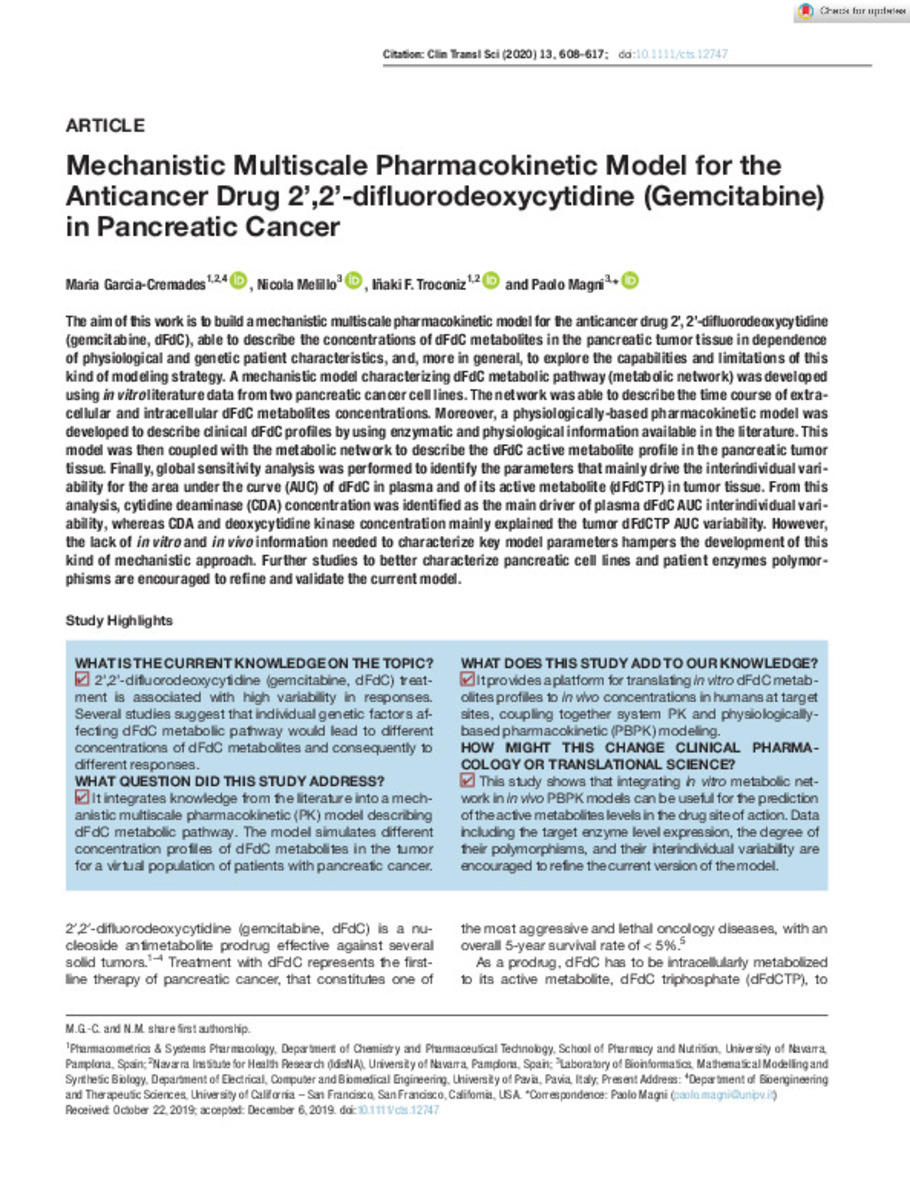Mechanistic Multiscale Pharmacokinetic Model for the Anticancer Drug 2’,2’-difluorodeoxycytidine (Gemcitabine) in Pancreatic Cancer
Note:
This is an open access article under
the terms of the Creative Commons AttributionNonCommercial License, which permits use,
distribution and reproduction in any medium, provided
the original work is properly cited and is not used for
commercial purposes.
Citation:
García-Cremades, M. (María); Melillo, N. (Nicola); Troconiz, I.F. (Iñaki F.); et al. "Mechanistic Multiscale Pharmacokinetic Model for the Anticancer Drug 2’,2’-difluorodeoxycytidine (Gemcitabine) in Pancreatic Cancer". CTS - Clinical and Translational Science. 13 (3), 2020, 608 - 617
Statistics and impact
0 citas en

0 citas en

Items in Dadun are protected by copyright, with all rights reserved, unless otherwise indicated.








